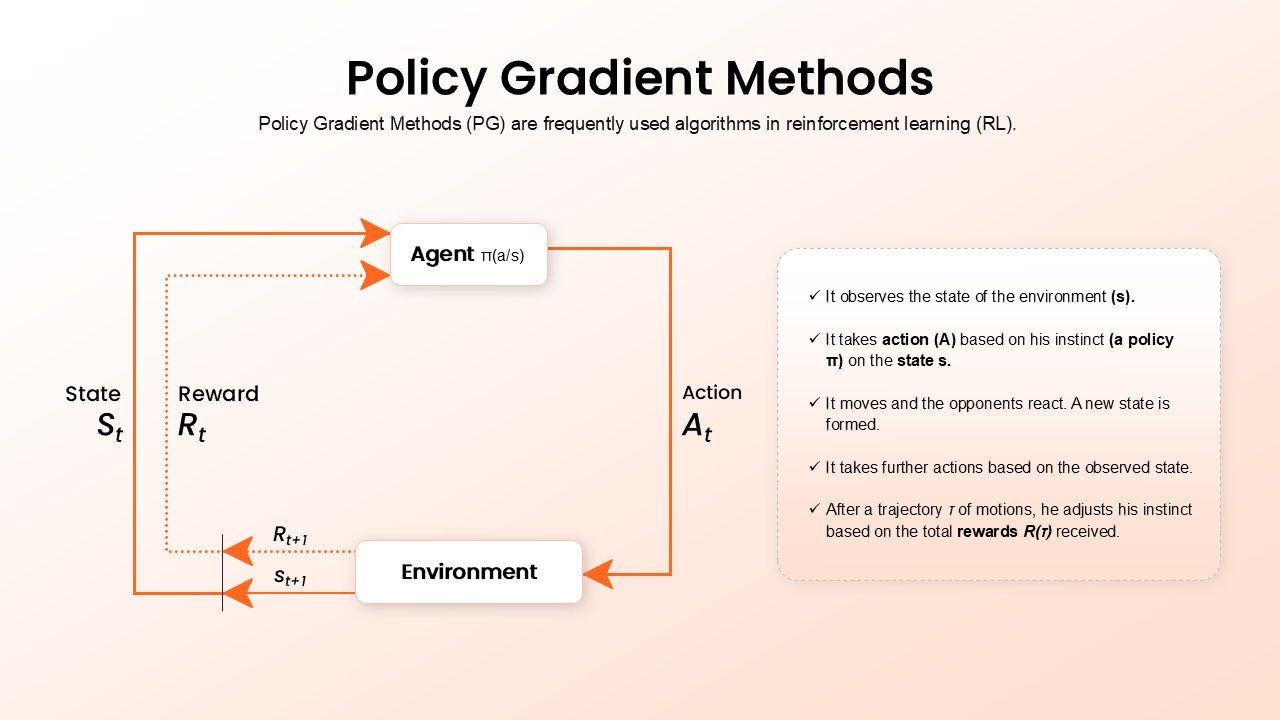policy-gradient-methods-template-powerpoint-google-slides

Description
Leverage this Policy Gradient Methods flow diagram slide to illustrate the core loop of reinforcement learning in a clear, step-by-step visual. The template depicts the agent interacting with its environment: observing state StS_tSt, taking action AtA_tAt via a parameterized policy π(a∣s)\pi(a|s)π(a∣s), receiving reward RtR_tRt, and transitioning to the next state St+1S_{t+1}St+1. A side panel summarizes key process steps—state observation, instinct-driven action, environment response, trajectory accumulation, and policy adjustment based on total rewards R(τ)R(τ)R(τ). Each element is rendered with bold orange arrows, clean white callouts, and a soft gradient background, ensuring maximum readability on both light and dark slides.
Engineered for customization, this slide uses PowerPoint and Google Slides master layouts that let you modify arrow colors, adjust box styles, or replace text labels with your own RL algorithm variants—Actor-Critic, REINFORCE, PPO, or DDPG. The modular design supports easy resizing and repositioning of diagram components, while the master slide includes both a light peach gradient and a complementary dark theme for seamless dark-mode presentations. Crisp sans-serif typography and consistent iconography maintain a professional aesthetic suitable for academic lectures, engineering roadmaps, and executive briefings.
With intuitive placeholders and organized layers, teams can quickly swap out policy notation, highlight different reward functions, or annotate trajectory examples. Whether you’re teaching a graduate-level ML course, pitching an AI research proposal, or updating stakeholders on algorithmic performance, this diagram slide streamlines complex RL concepts into a single, digestible overview. Optimize your next presentation by clearly mapping agent–environment dynamics, illustrating policy update mechanics, and emphasizing the feedback loop that underpins modern reinforcement learning.
Who is it for
This slide is ideal for machine learning researchers, data scientists, and AI engineers who need to present the policy gradient learning cycle in academic lectures, technical workshops, or project kick-offs.
Other Uses
Beyond RL methods, use this diagram to illustrate feedback loops in DevOps, control systems, business process iterations, or any agent–environment model. It also works well for onboarding sessions, stakeholder demos, and research proposal overviews.
Login to download this file

















































